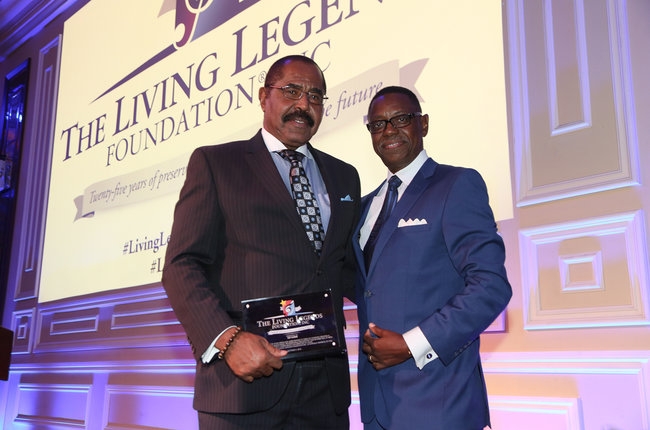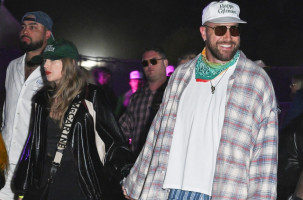Nearly 40 years ago, June was first recognized as Black Music Month. The annual celebration was later rechristened as African-American Music Appreciation Month by former President Barack Obama. This year, the recognition of the rich and influential legacy of black music and black culture takes on even more urgency in the wake of R&B/hip-hop’s dominance on the streaming front, the record-breaking box-office success of Black Panther and the galvanizing #TimesUp movement.
To mark this year’s celebration, Billboard’s Chapter & Verse column will be posting a series of editorials covering various aspects of the music industry. David Linton, former senior VP at Capitol Records following VP stints at Island and Arista, kicks off the series from his vantage point as chairman of the non-profit Living Legends Foundation. (livinglegendsfoundation.com). Launched 27 years ago, LLF honors trailblazing executives of color in radio and music. Linton weighs in on the challenging history and future of black music executives amid a new era of pride—and change.
The question recently raised by Billboard in "Why Hasn’t the Hip-Hop Boom Pushed More Black Executives to the Top?" (April 13) is one that’s been asked dozens of times during the past decade. In fact, the real question should be: "Why were black music executives the sacrificial lambs during the music industry’s difficult years?" Black music (rap, R&B, gospel, jazz, reggae) always maintained its prominence in the marketplace.
However, the internal mechanisms at labels changed to ensure white executive dominance and growth by putting more emphasis on “rhythm crossover” or “rhythmic” radio (rap music marketed to white/Latino audiences) via New York’s WQHT Hot 97, Los Angeles’ KPWR Power 106 and their major city clones that made rap/hip-hop their core music. That gave rise to non-black executives who were then given the nod as experts in the hip-hop arena since they marketed music to those stations. Meanwhile, in order for those songs to reach those formats originally, they had to prove themselves by becoming hits on urban radio which was worked predominately by black executives.
While music is the universal language and colorblind, as are the audiences that listen, music marketers inside the labels unfortunately aren't. Someone listening to Power 106 doesn't know or care what department markets the music or the categories assigned to the stations. Only those inside music companies care. I recall internal battles about securing budgets to promote black artists to black radio while the seemingly unlimited budgets to promote the same artists to rhythm crossover was just the cost of doing business.
Labels’ black music divisions used to be the one-stop for black artists of all genres to enter a label and a training ground for executive development. These divisions usually encompassed A&R, marketing, promotions and sales departments all managed by people of color but not exclusive to them. These autonomous cost centers made millions for the labels. We knew the music, understood the culture and knew the idiosyncrasies of the artists and their management. We also had marketplace relationships to get the desired results. Additionally, white executives really didn’t want to be bothered except for those tasked with working the crossover stations. They were happy trying to revive rock music and break boy bands, girl groups and the occasional breakout artist. Meanwhile, music from the streets of Los Angeles, New York, Houston, St. Louis, Atlanta and New Orleans was dominating the scene.
Yet these divisions were dissolved under the guise of inclusion because they were threatening the norm by outshining their white counterparts. I recall hearing a white label executive say, "I'm tired of working this black sh$#." It was perceived as the tail wagging the dog. Back then, black labels like LaFace, Uptown, Motown and Bad Boy—with the exception of Cash Money— were bought then shelved almost systematically. Yes, all of those owners got paid and Motown is so iconic it remains an imprint. But it was a small price to pay to regain dominance. The Def Jam of today sure doesn’t look like the Def Jam of Russell Simmons and Lyor Cohen.
When Eminem sold over a million units in his opening week, that was the beginning of the end. The modern-day Elvis had been found. It made white label executives look closer at who was buying the music that they really didn’t understand or care about. When they found that a large percentage of buyers came from the suburbs, they said, “We got this.” What they failed to realize or ignored was that black people live in the suburbs, too. That narrow-mindedness led them to believe that inner-city sales were all black and suburban sales were all white. The integration of America was paying off—at least musically.
Then, with checkbooks in hand, young white A&R executives began signing rap/hip-hop artists. However, knowing a few key slang words or how to dress (hat to the back, jeans, hoodies) won’t take you far. You can fake the funk only for so long. The industry had reverted to the ‘60s and ‘70s: digital singles were the new 45s and co-opting black culture was in full effect.
Clive Davis, then-president of Columbia Records, commissioned A Study of the Soul Music Environment (popularly known as the Harvard Report). This study was designed to help the majors understand and duplicate the success of independent black labels like Motown and Stax. Now we have a contemporary version with the University of Southern California’s Annenberg Inclusion Initiative Project. However, does the industry really need to study how to be inclusive? Or is this simply a feel-good exercise that says we’re trying?
We’ve seen this movie before. There were joint venture deals between majors and independent black labels in the ‘70s, black music divisions in the ‘80s and presidents of black music in the '90s. Universal Records chief Doug Morris hired Jean Riggins as president of black music. And the label became a principal force on the strength of a roster that included Erykah Badu, Nelly, the Lost Boyz and Cash Money. MCA Records’ president of black music Ken Wilson later led the promotional charge that pushed Clive Davis’ J Records (Alicia Keys, Jamie Foxx, Angie Stone) into the major leagues.
The industry had an unwritten but clearly defined black executive hierarchy formula: one senior VP (usually promotions, sometimes senior VP/GM), one to three VPs (promotion, marketing and publicity), two national directors and two product managers. Sometimes the VP was substituted with a senior director, especially in marketing and publicity. Even when the authority normally associated with a title was stripped, titles were kept to maintain the facade that nothing had changed.
But there were also a few exceptions such as Ed Eckstein, then-president of Mercury Records, and Sylvia Rhone, former chairman/CEO of Elektra Entertainment Group and now president of Epic Records These were true glass ceiling breakers, responsible for the entire company and not just its black side. Later, there was Antonio “L.A.” Reid, who helmed Arista, Island-Def Jam and Sony. Now we have Jon Platt, chairman/CEO of Warner/Chappell Music, and Troy Carter, global head of creator services at Spotify.
Now the 10- to 20-year cycle for major change is here again. The truth is there should have been replacements in line for black executives like Riggins, Eckstein, Rhone and many other mavericks. These people didn’t just hold titles but the ability to affect change and they did—maybe too much. A black music executive’s career cycle is at least 10 years less than his white counterpart’s. Ironically, many of my white peers are still in the mix while dozens of black executives, who possess the capacity to run the whole ball of wax, are on the sidelines.
The Living Legends Foundation wants to be part of this next major change. Our membership is comprised of some of the most influential and uniquely qualified male and female executives in black music over the last 30 years. We can show labels how to be more inclusive. We can also help groom the current group of young black executives. If the industry is sincere in correcting this corporate injustice, let’s have a conversation. We’ve lived it and were successful doing it. Call us—and let’s get it right this time.








